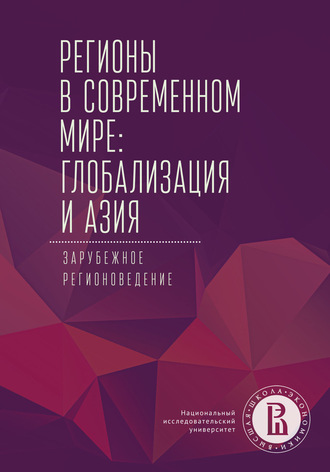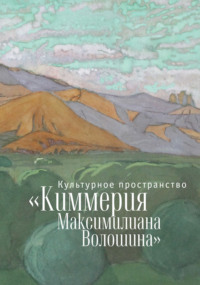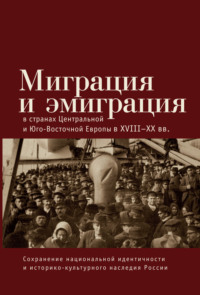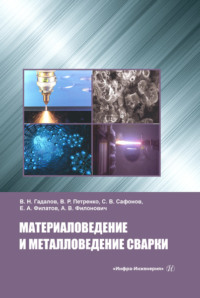
Полная версия
Регионы в современном мире: глобализация и Азия. Зарубежное регионоведение
Growth of Anti-Protests on Letpadaung Project and investigation Commission Protests before the Commission
On 30 September 2011, the new government’s President Thein Sein suspended the Myitsone Dam General Project. This project is one of the significant Beijing ventures in Myanmar, and two countries reached the final agreement before Myanmar’s first democratic government era and Maung Aung Myoe also highlighted similar idea in his work [Maung Myoe, 2015. P. 37]. Many Myanmar people believe that China is trying to take all of Myanmar natural resources for their development benefits72. This mindset has come from a lack of trust in Chinese goods and business practices.
At the same time, the tensions appear between Myanmar Wanbao and villagers because the regional government forced local people to relocate from their land at the beginning of 2011 [Decicca, 2015]. According to Amnesty’s survey, 30 villages and 6,785 acres of land are located in the project area [Amnesty, 2015. P. 13]. Anti-Chinese activists used the opportunities to influence Letpadaung villagers easily. In the mid of 2012, residents opened the demonstrations camp near the Myanmar Wanbao headquarter73. Before the sunrise of the 29th of November 2012, the police disbanded the protest campsite by using tear-bombs and water cannons. Some investigators found that the cops even used white phosphorous [Charltons, 2013. P. 1].
Letpaduang investigation Commission
Therefore, President Thein Sein formed the “Letpadaung Investigation Commission” and requested Aung Sann Su Kyi to become its chairperson on 1 December 2012 [Charltons, 2013. P. 1]. The President’s office appointed 16 members on the commission including military and police officers, academics and dignitaries. As a leader of the investigation commission, Aung San Su Kyi clearly understood the Chinese role in Myanmar Domestic policy and underlying Beijing’s interests74, and Yun Sun also indicated it in her work [Yun Sun, 2015].
The commission visited the Letpadaung Mine project area from 5th to 15th of December 2012. At the same time, commissioners also met with the injured demonstrators in the Monywa hospitals and Yangon General Hospital. According to the commission’s report, there were 108 people and 99 monks injured in the incident75. According to Charlton, the investigators observed that the commission met with the Police Chief of Staff and Police colonel accountable for the Sagaing Region [Charltons, 2013. P. 3], and discussed the details about the crackdown incidents of the 29th of November. Later, the Minister of Home Affairs removed several police officers from their current duties in Sagaing Region as stated in the local newspapers. When Aung San Su Kyi met with the villagers, they responded with emotional words. Su Kyi told the villagers, “If we stop this project, it will not benefit the local community, or the country and they might think that our country cannot be trusted on the economy.” at the Letpadaung [Charltons, 2013. P. 4]. She also argued that “Myanmar needs Chinese investment. We have to get along with [China] whether we like it or not” [Ramachandran, 2016].
The commission also visited the Moneywa mine project areas, not only Letpaduang but also Sabetaung and Kyaysintaung projects. In March 2013, the investigation commission delivered its final report to the President and publishing it in governmental newspapers [Mizumo, 2016. P. 113]. However, the commission agreed to continue the Letpadaung Copper Mine Project recommending 42 essential suggestions to the mines’ investors. Official Beijing being satisfied with the final report of the commission and sent the Chinese ambassador to pay visit to Aung San Su Kyi’s residence, expressing his congratulation on behalf of the Chinese government on the 24th of April 2013 [BBC]. Myanmar Wanbao also released its statement, promising that “they will continue contributing to the sustainable development of our local community and of Myanmar as a whole” [Charltons, 2013. P. 3].
In the new contract, Myanmar Wanbao, UMEHL, and the government specified new profit-sharing of the project by allocating 51% to the Myanmar government, 30% to Myanmar Wanbao, and 19% to the UMEHL. On the other hand, the investors have to use one million US$ for corporate social responsibility and two million US$ for the annual environmental preservation [Mizumo, 2016. P. 113]. Yun Sun noted that “the investigation committee for the Letpdaung copper mine project, which she (Aung San Su Kyi) chaired, approved the continuation of the joint venture despite opposition from local residents and Myanmar society in general… her position (or rather lack of it) has made her, at the minimum, an acceptable Myanmar politician for China.” [Yun Sun, 2015].
Protests after the Commission
On 13 March 2013, Aung San Su Kyi visited local residents again, shortly after her commission published a final report. At the same time, the villagers did not stop their protests, rather intensifying them more provokingly. She faced emotional counter words from the villagers like during her first trip76, but this time they became more depraved and the government responded with tight security for her. The villagers also delivered their opinion that they did not want relocation and compensation, and they were not going to stop until the project shuts down totally [Charltons, 2015. P. 4].
In November 2013, police officers and villagers clashed again in the Myanmar Wanbao’s headquarter, near the Letpadaung Project. The police used rubber bullets for antiriot shotguns, and nine police officers and five activists were wounded [Win Zaw Latt, 2013]. However, the villagers and activists still commented on environmental pollution and unfair salary for local workers, relocation and compensation processes for their land. Before the Letpadaung Investigation commission, Myanmar Wanbao reimbursed 550,000 MMKyats77 for an acre. Later, according to the commission’s suggestion, Wanbao agreed to provide additional compensation for an acre between 700,000 and 1,25 million MMKyats [Maung Myoe, 2015. P. 38].
Back then, the author worked as a reporter, and visited the project on two times interviewing locals and activists. When he reached out to Myanmar Wanbao, they explained every detail of the Letpaduang project. The company sent journalists to meetings between villagers and company officers to examine how the company officials proposed CSR programs to local community. However, the author interviewed villagers and activists. The author asked, “If you need urgent development for your community, and, even, you know that you can produce valuable bronze from Letpaduang Mountain, what will you do?” The local activist answered that “We will not produce any copper or bronze from the Letpadaung Mountain, even we do not have anything to eat. We do not need any development if we have to destroy the Letpadaung, and we are going to enjoy its beauty until we die.” Therefore, we could clearly understand that the local residence feeling on the project.
When Myanmar Wanbao tried to start the project in December 2014, they faced vocal protests from the villagers again. Finally, the tension reached the highest point, after the police opened fire, and one villager, Daw Khin Win died on the spot. It received attention from international and local activists [Kivimäki, 2016]. According to Amnesty’s research paper, there was preannounced lack of environmental concern and management in the mine. In May 2016, Myanmar Wanbao announced that they had started to producing copper from the Letpadaung Mine for the first time [Amnesty, 2016. P. 4].
Effects in Sino-Myanmar Relations
Every Myanmar government has believed that China is the paramount partner for domestic and foreign interests [Toh Han Shih, 2014]. Until the Myanmar’s democratization period, China was the leading investor in Myanmar. However, after a series of protests in Letpadaung Copper Mine Project took place, Beijing investments dropped rapidly [Yun Sun, 2012. P. 75]. In the first year of Thein Sein’s administration, 2011-2012, Chinese FDI in Myanmar reached US$ 4345.7378 million, and it was the second-highest amount in two countries trade since 1988, according to the Myanmar State Directorate of the Investment and Company Administration’s figures. However, in 2013-2014, FDI from China to Myanmar visibly dropped to the US$ 56.16 million, becoming the lowest since 1988 [DICA’s annual report].
In March 2016, the NLD government came into power. They continue focusing on the “China’s role in the region” and “Logic of geopolitic” when comstructing their foreign policy and Sudha Ramachandran has also illustrated symmetric idea in his work [Ramachandran, 2016]. However, the relations between the two countries have not improved as it was expected by both sides. The FDI from China never reached its highest pre 2011 point. On the other hand, the anti-Chinese sentiments are still festering in the Myanmar community.
Conclusion
Since 1988, Myanmar political activists had been trying to develop democracy in the country. However, they were suppressed by the Military government for over two decades, from 1988 to 2011. Therefore, majority of Myanmar people did not support the junta. They considered the government supporters and partner countries as traitors. Whenever the military government was under international pressure, China always stood by their side and supported with loans and investments [U Myo-Thit, 2017]. It has resulted in the development of the Sinophobia in Myanmar. The citizens did not trust Chinese investments because of their lack of duties for social responsibilities. Beijing understood for those sentiments and, therefore, tried to smooth every process for their investments in Myanmar with the Junta
However, the Chinese policies backfired when President Thein Sein’s government listened to their follow people’s voices. Consequently, the Beijing became concerned when the opposition was elected in the general election in 2015 [BBC, 2019]. In his trip, Wang Yi expressed hopes to his counterpart, Daw Aung San Su Kyi that Chinese interests in Myanmar will continue to be expected. The present situation of Sino-Myanmar relations, however, has many unresolved problems such the Chinese role in the Myanmar cease-fire, Myitsone Dam General Project and border issues.
References
Open for Business? Corporate Crime and Abuses at Myanmar Copper Mine // AmnestyInternational,February2015.URL:https://www.amnesty.org/en/documents/asa16/0003/2015/en/ (date of access: 19.02.2020). (in English)
A. Clapp Priscilla. China’s Relations with Burma: Testimony Before The U.S-China Economic and Security Review Commission on China’s Relations with Southeast Asia // United States Institute of Peace, 2015. URL: http://www.usip.org/publications/2015/05/13/china-s-relations-burma (date of access: 19.02.2020). (in English)
Atsuko Mizumo. Economica Relations Between Myanmar and China // JICA Research Institute, Department of International Economy and Business // Faculty of Economics // Kyushu University, Japan, 2016. URL: https://link.springer.com/chapter/10.1007/978-4-431-55735-7_8 (date of access: 19.02.2020). (in English)
Copper Mine Investigation Commission, Letpadaung Copper Mine Investigation Commission Issues Final Report // The President’s Office of The Republic of the Union of Myanmar, April 2013. URL: http://www.charltonslaw.com/letpadaung-investigation-commission-issues-final-report/ (date of access: 19.02.2020). (in English)
China-Myanmar agrees to deepen comprehensive strategic cooperation // Xinhuanet, 2014. URL: http://news.xinhuanet.com/english/china/2014-11/15/c_133790813.htm (date of access: 19.02.2020). (in English)
Cheny Ang Li and James Char. China-Myanmar Relations Since Naypyidaw’s Political Transition: How Beijing Can Balance Short-Term Interests and Long-Term Values // S. Rajaratnam School of International Studies, 2015. URL: https:// www.rsis.edu.sg/wp-content/uploads/2015/03/WP288_150316_China-Myanmar-Relations (date of access: 06.01.2020). (in English)
Debby Sze Wan Chan. China’s Diplomatic Strategies in Response to Economic disputes in Myanmar // In. J. International Relations of the Asia-Pacific, Vol. 00, 2018, pp. 1–30, Oxford Academic. URL: https://academic.oup.com/irap/advance-article/doi/10.1093/irap/lcy026/5149704 (date of access: 01.01.2020). (in English)
Lauren Decicca. In the Shadow of Letpadaung: Stories from Myanmar’s Largest Copper Mine // National Resource Governance Institute, 2015. URL: https:// resourcegovernance.org/blog/shadow-letpadaung-stories-myanmars-largest-coppermine (date of access: 01.01.2020). (in English)
Myanmar Cracks Down on Protest at China-owned Mine // China Digital Times, 2012. URL: http://chinadigitaltimes.net/2012/11/myanmar-cracks-down-on-protestat-china-owned-mine/ (date of access: 02.01.2020). (in English)
Myanmar Wanbao Company Limited. URL: http://www.myanmarwanbao.com.mm/mm.html (date of access: 03.01.2020). (in English)
Maung Aung MYOE, Myanmar’s China Policy since 2011: Determinants and Directions // Int. J. Journal of Current Southeast Asian Affairs, 2015, Vol. 34. No. 2. Pp. 21-54. URL: https://journals.sub.uni-hamburg.de/giga/jsaa/article/view/872/879. Html (date of access: 05.01.2020). (in English)
Maria Abi-Habib. How China Got Srilanka to Cough Up a Port// The New York Times, 2018, URL: https://www.nytimes.com/2018/06/25/world/asia/china-sri-lanka-port.html (date of access: 02.01.2020). (in English)
Prashanth Paremeswaran, China’s Influence in Myanmar Facing Growing Scrutiny: Beijing Is still Struggling to Adapt To Myanmar’s New Landscape // Di- plomat Magazine, 2015. URL: http://thediplomat.com/2015/01/chinas-influence-in-myanmar-facing-growing-scrutiny/ (date of access: 02.01.2020). (in English)
Sudha Ramachandran. Chinese Influence Faces Uncertain Future in Myanmar // The Jamestown Foundation, Global Research & Analysis, 2016. URL: https:// jamestown.org/program/chinese-influence-faces-uncertain-future-in-myanmar/ (date of access: 02.01.2020). (in English)
Toh Han Shih. China’s rivals catching up in investment race in Myanmar // South China Morning Post, 2014. URL: http://carnegietsinghua.org/2014/01/25/chinese-investment-is-key-to-myanmar-s-reforms-pub-54299 (date of access: 04.01.2020). (in English)
Tang Xiaoyang. Chinese Investment is Key to Myanmar’s Reform // Carnegie-Tsinghua, Center for Global Policy, 2014, URL: http://carnegietsinghua. org/2014/01/25/chinese-investment-is-key-to-myanmar-s-reforms-pub-54299 (date of access: 02.01.2020). (in English)
Timo Kivimäki. Politics of Economic Relations Between China and Myanmar // In Book: Chinese Global Production Networks in ASEAN, 2016. URL: https://www.researchgate.net/publication/300130508_Politics_of_Economic_Relations_Between_China_and_Myanmar (date of access: 05.01.2020). (in English)
Yun Sun. Can the NLD and China usher in a new era in relations? // The Myanmar Times, 2015. URL: http://www.mmtimes.com/index.php/opinion/18167-can-thenld-and-china-usher-in-a-new-era-in-relations.html (date of access: 05.01.2020). (in English)
Yun Sun. China’s Strategic Misjudgement on Myanmar // Int. J. Journal of Current Southeast Asian Affairs, 2012, Vol. 31. No. 1. P. 73–96. URL: https:// journals.sub.uni-hamburg.de/giga/jsaa/article/view/513.html (date of access: 09.01.2020). (in English)

Арктическая политика республики Индия
В статье анализируются значение геополитического региона Арктики, основные направления внешней политики Индии в Арктике, происходящие глобальные процессы, такие как глобальное потепление и таяние арктических льдов; рассматривается значение Северного морского пути с точки зрения использования его для осуществления коммуникаций; показана политика арктических и неарктических государств, расширение их сотрудничества в этой зоне. Взаимодействие российских и индийских компаний в разработке арктических месторождений определяется стремлением подтвердить заинтересованность в Индии как важном союзнике на мировой арене. Индия стремится сохранить для себя возможность маневра при участии в решении арктических проблем, используя членство в Арктическом совете. Она намерена принимать активное участие в инициативах, связанных с проблемами Арктики. Партнерство Дели с Россией может способствовать сдерживанию Китая в его соперничестве с Индией в борьбе за энергетические ресурсы Арктики.
Ключевые слова: Арктика, Индия, Россия, Северный морской путь, Арктический совет, арктические и неарктические государства.
ARCTIC POLICY OF THE REPUBLIC OF INDIASHAUMYAN TATIANA LVOVNAHead, Centre for Indian Studies, Institute of Oriental Studies Russian Academy of Sciencestshaumyan@gmail.comThe article analyzes the geopolitical importance of the Arctic region, the main directions of India’s foreign policy in the Arctic, ongoing global processes such as global warming and the melting of the Arctic, discusses the importance of the Northern sea route from the point of view of using it for communication; the politics of Arctic and non-Arctic States to increase their cooperation in this area. The problem for India is the study of global climate change, precipitation, and ice conditions in Arctic glaciers to detect possible distant interdependence between the Arctic climate and the Indian monsoon. The melting of Arctic ice, global warming, raising global sea level by melting of glaciers can cause flooding in large areas of India with a population of over 100 million people. Monitoring the condition of the ice is one of the priorities of Indian scientists working in the Arctic region. The Russian-Indian cooperation to develop Arctic fields is determined by their desire to confirm the interest in India as an important ally on the world stage. India seeks to write for itself the flexibility with participation in the solution of problems of the Arctic, using membership in the Arctic Council. India intends to take an active part in initiatives related to Arctic issues. The Indian side confirmed its interest in equal participation in the development of existing and new projects in Siberia, the Russian Far East and the Arctic shelf through oil and gas company ONGC-OVL. India will continue to participate actively in the initiatives related to the Arctic issues using membership in the Arctic Council. Delhi’s partnership with Russia may contribute to the containment of China in its rivalry with India in the struggle for energy resources in the Arctic.
Keywords: Arctic, India, Russia, Northern Sea Route, the Arctic Council, Arctic and Non-Arctic States.
Первые свидетельства заинтересованности Индии в арктических исследованиях относятся к периоду, когда она еще была частью Британской колониальной империи. В феврале 1920 г. Индия присоединилась к Шпицбергенскому трактату, который определил международно-правовой статус архипелага Шпицберген, находившегося под суверенитетом Норвегии. Этот документ был подписан в Париже странами Европы, Азии и Америки, включая заморские доминионы Великобритании.
В 1981 г. по инициативе премьер-министра Индии Индиры Ганди был создан Департамент океанических исследований, который впоследствии был преобразован в Министерство наук о земле. Была разработана программа арктических исследований. Основанный в апреле 1999 г. в Гоа Национальный центр для антарктических и океанических исследований (NCAOR) с целью координации и развития полярных исследований в Индии активно включился в сотрудничество с зарубежными научными арктическими центрами.
По инициативе Министерства наук о земле Индии планы арктических экспедиций и программ научных исследований включались в пятилетние планы развития Индии. Предусматривалось направление индийских ученых на архипелаг Шпицберген и исследовательских судов океанографических экспедиций в периоды арктического лета.
Цели Индии в Арктике: экологический аспект. Охрана окружающей среды – важнейший фактор, определяющий активность Индии в Арктике. Речь идет о проблеме изменения климата и глобального потепления, причем, если пик потепления придется на весну и начало лета, рост температур на Севере Индии может иметь катастрофические последствия. Таяние льдов в Арктике, глобальное потепление, повышение уровня мирового океана в результате таяния ледников могут привести к затоплению значительной части территории Индии с населением более 100 млн. человек. Поэтому наблюдение за состоянием льдов является одной из приоритетных задач индийских ученых, работающих в Арктике.
Актуальной проблемой для Индии является исследование глобального изменения климата, осадков и состояния льдов арктических ледников и Северного Ледовитого океана для выявления возможной отдаленной взаимозависимости между арктическим климатом и индийскими муссонами. Индийские ученые установили наличие подобной зависимости, но пока ее механизмы не ясны. Объемы муссонных дождей представляются жизненно важной проблемой для развития сельского хозяйства Индии. По словам одного из участников арктических исследований Индии К. П. Кришнана, особое значение арктического региона для индийского субконтинента как раз и определяется тем, что «существует атмосферная зависимость региона Северного полюса и интенсивности индийских муссонов». Поэтому результаты исследований могут помочь моделированию и предсказанию состояния и интенсивности индийских муссонов [Антюшина, Арктика… 2014. С. 91–93; Антюшина, Расширение… 2014. С. 65–78].
Первая научная экспедиция Индии в Северный Ледовитый океан в составе пяти человек во главе с директором Национального центра антарктических и океанских исследований Шри Разик Равиндрой была направлена в первую неделю августа 2007 г. [Подоплекин, 2011. С. 42]. В результате месячного пребывания на международной арктической базе в Ню-Олесунне было положено начало трем долгосрочным научным проектам в области изучения атмосферы, микробиологии, науки о земле и исследования ледников. С этого времени Индия регулярно – 3–4 раза в год – направляла в Арктику научные экспедиции [Страны-наблюдатели, 2014. С. 18–24]. В ходе второй научной экспедиции лета 2008 г. была официально открыта индийская научно-исследовательская станция «Химадри» в 1200 км от Северного полюса как часть Международной исследовательской арктической базы в Ню-Олесунне на архипелаге Шпицберген. Здесь ведутся исследования льдов, атмосферных и биологических процессов и т. д. Третья индийская экспедиция работала в июне-июле-августе 2009 и марте-апреле 2010 гг. С 14.05.2011 до 08.06.2011 г. в Арктике работала индийская экспедиция в составе 5 человек. В индийской арктической программе принимают участие ученые из различных национальных институтов; в исследования за последние годы было вложено свыше 12 млн. долларов США. В 2012– 2013 гг. 25 ученых посетили базу в Химадри, где провели в общей сложности более 185 дней для проведения исследований по десяти специальным проектам [Коновалова, 2014. С. 145–151].
В 2012 г. Индия обратилась с просьбой о предоставлении ей статуса наблюдателя в Международном комитете по исследованиям Арктики, и 01.05.2013 г. на восьмой встрече министров стран – членов Арктического совета, состоявшейся в г. Кируна (Швеция), этот статус был ей предоставлен (наряду с Китаем, Японией, Республикой Корея, Италией и Сингапуром). Получая статус наблюдателя, Индия должна была придерживаться ряда условий: уважать суверенные права арктических государств; признать, что морское право и конвенция ООН по морскому праву являются законодательной основой и законодательными рамками, определяющими условия деятельности в Арктике; уважать коренное население, местную культуру и традиции; вносить вклад в деятельность Арктического совета.
В качестве постоянного наблюдателя Индия принимает активное участие в исследовательской деятельности в сотрудничестве с другими членами Арктического совета, уделяя особое внимание необходимости изучения глобального потепления и состояния арктических льдов. Таяние арктических льдов оказывает влияние на состояние льдов на Тибетском плато, откуда берут начало основные реки Индии. Известно, что любые изменения состояния льдов на вершинах Гималайского хребта могут вызывать серьезные наводнения и иметь катастрофические последствия для всей Индо-Гангской долины.









